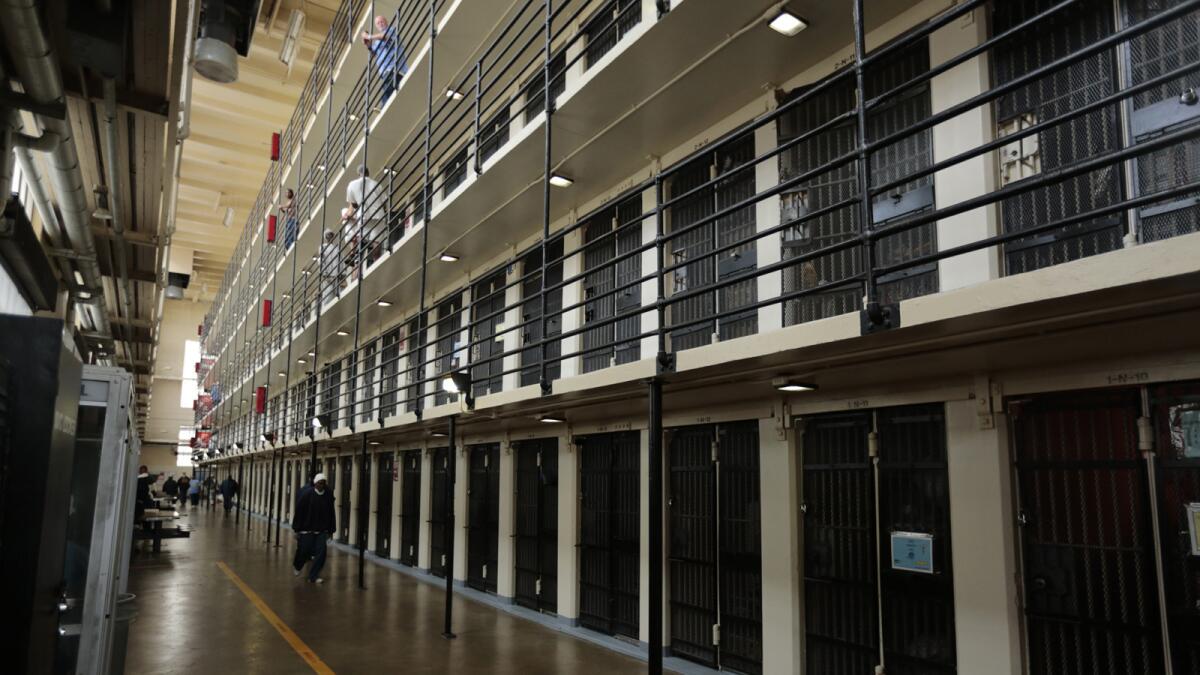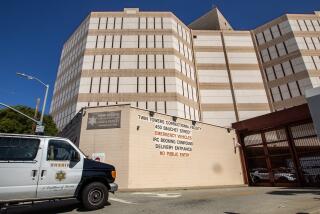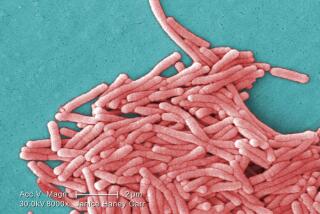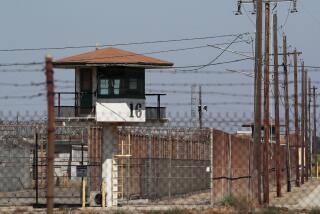Several San Quentin prison inmates have tested positive for Legionnaires’ disease

A cellblock at San Quentin State Prison in April. More than 80 inmates became sick with pneumonia during an outbreak of Legionnaire’s disease. The bacteria was traced to the prison medical building.
Six San Quentin prison inmates have tested positive for Legionnaires’ disease, and more than 50 others are showing early symptoms following an outbreak discovered at the Bay Area prison late last week, officials said.
The potentially life-threatening lung infection, a type of pneumonia, is contracted by inhaling mist from water contaminated with the Legionella pneumophila bacteria.
The first inmate was diagnosed on Thursday and taken to a nearby hospital.
Prison officials have not isolated the source of the bacteria, so they shut off taps, showers and closed the kitchen to eliminate steam from cooking and cleaning, said spokeswoman Dana Simas. They even shut off access to the toilets, using portable ones instead.
But public health officials determined toilets probably were not the source of the infections. The service has been restored.
Inmates are drinking bottled water, eating boxed lunches and using portable showers – which come with their own water supply -- as the investigation continues, Simas said.
All visitation and volunteer programs have been temporarily suspended until the source of the bacteria is located, Simas said.
San Quentin houses about 3,700 inmates and has 1,800 employees. It is also home to more than 700 inmates on death row, none of whom is so far showing symptoms of the disease, Simas said.
Medium- and high-security inmates have been on virtual lockdown since the outbreak began. “They’re staying in their cells because we don’t have the staff to monitor movements while we conduct the investigation,” Simas said.
The 51 inmates showing early symptoms – fever, headache, chills, cough – is up from 45 on Saturday, Simas said. The six inmates with confirmed cases are receiving antibiotics and are in stable condition.
Prison officials are communicating with the inmates’ advisory council, whose members have been cooperating. “They understand this could be a very dangerous situation if we don’t get it under control,” Simas said.
Legionnaires’ is particularly serious in people who have weakened immune systems or are over 50 years old. Simas could not provide the ages of the inmates who have symptoms.
A recent Legionnaires’ disease outbreak in New York City killed 12 people and sickened more than 100 others.
The source of that outbreak was traced to a rooftop air-conditioning unit at a historic hotel in the Bronx.
California public health records show 348 reported cases of Legionnaires’ disease in 2014, two-thirds of them affecting individuals 65 or older. More than half of the cases occurred in Los Angeles County.
The U.S. Centers for Disease Control and Prevention estimates that fewer than half the cases of legionellosis, the proper medical term for the disease, are reported.
From 2009 to 2012, California reported 82 deaths attributed to the bacteria, according to the state Department of Public Health.
jack.dolan@latimes.com
Twitter: @jackdolanLAT
ALSO:
Compton mayor’s charity tie-in to State of the City speech raises eyebrows
Venice Beach shooting leaves one man dead and another wounded
Southern California temperatures are expected to cool by midweek
More to Read
Start your day right
Sign up for Essential California for news, features and recommendations from the L.A. Times and beyond in your inbox six days a week.
You may occasionally receive promotional content from the Los Angeles Times.







